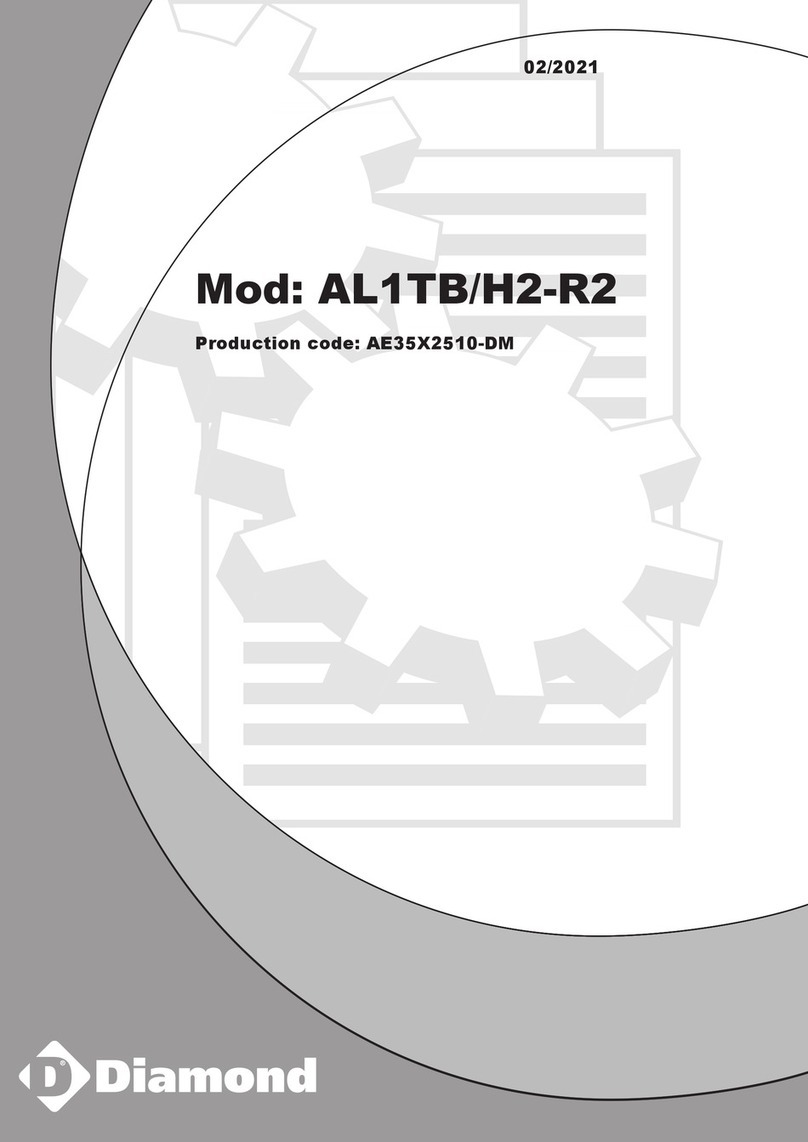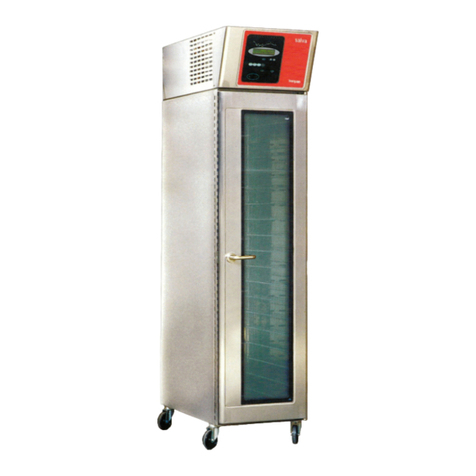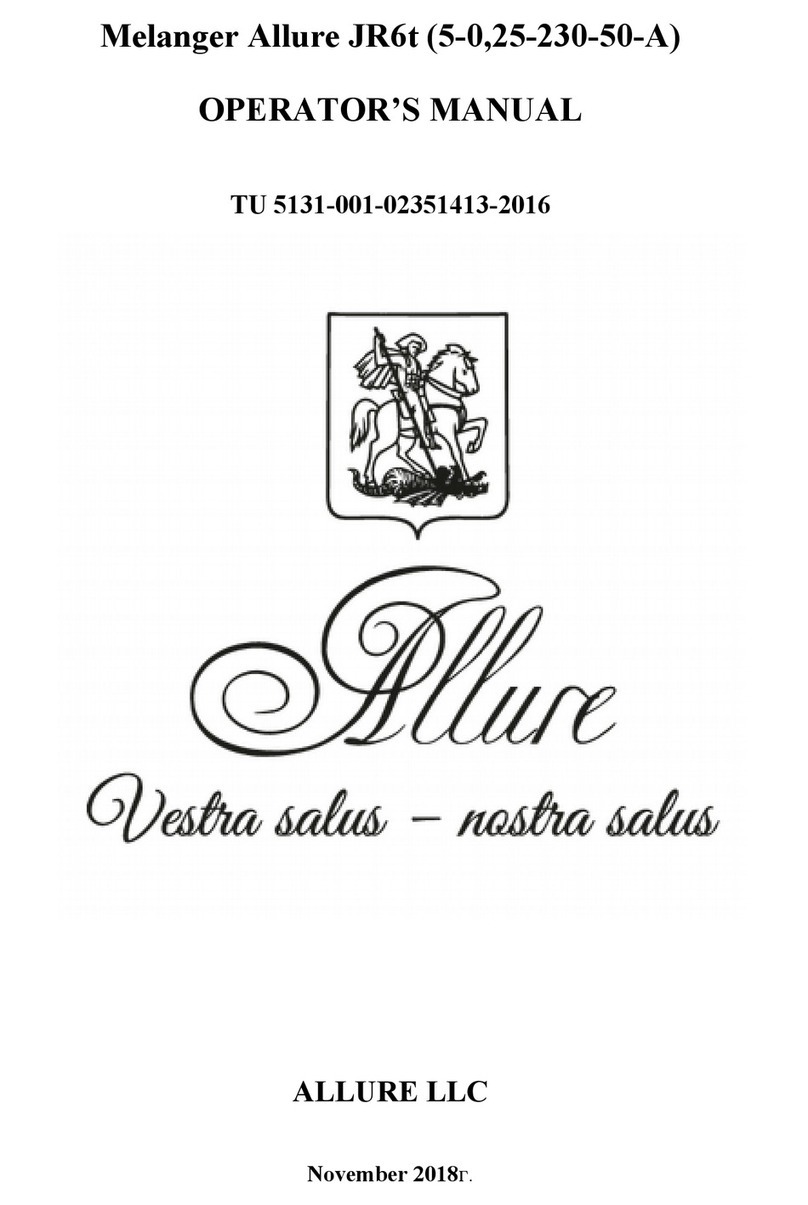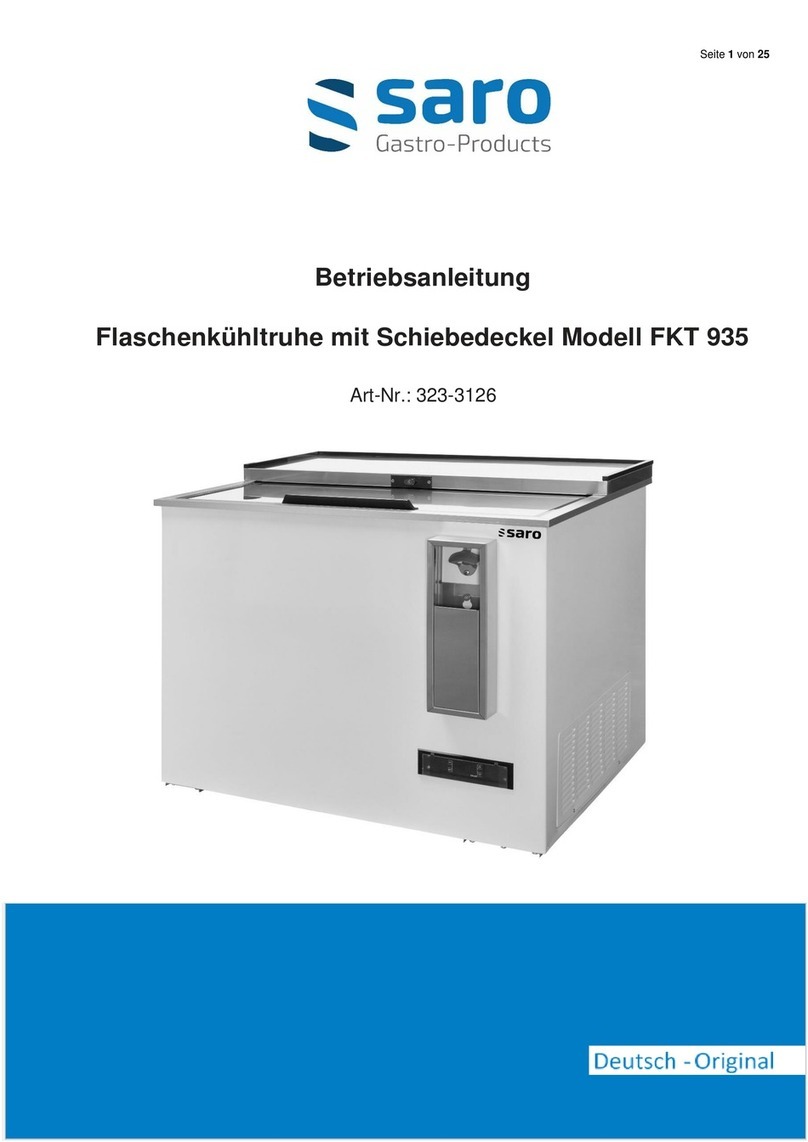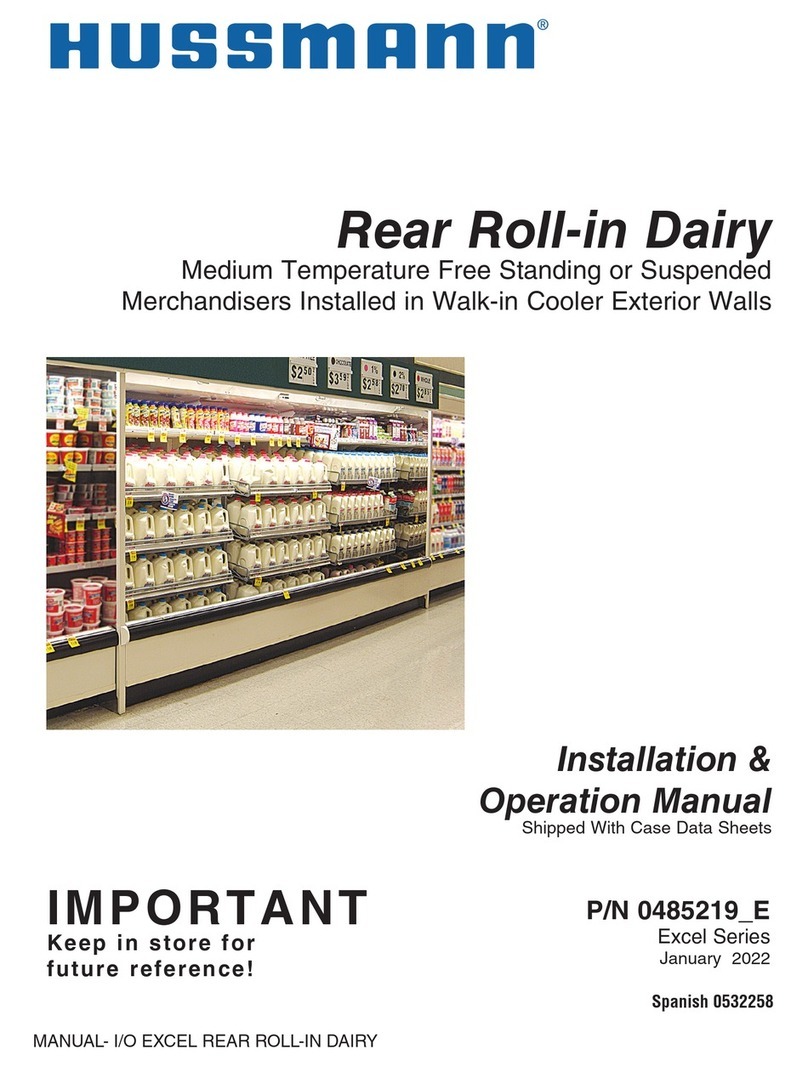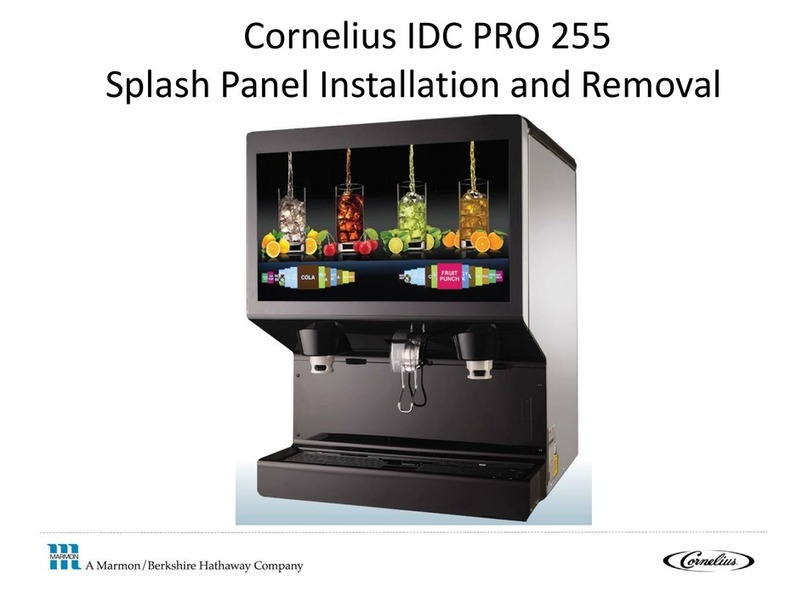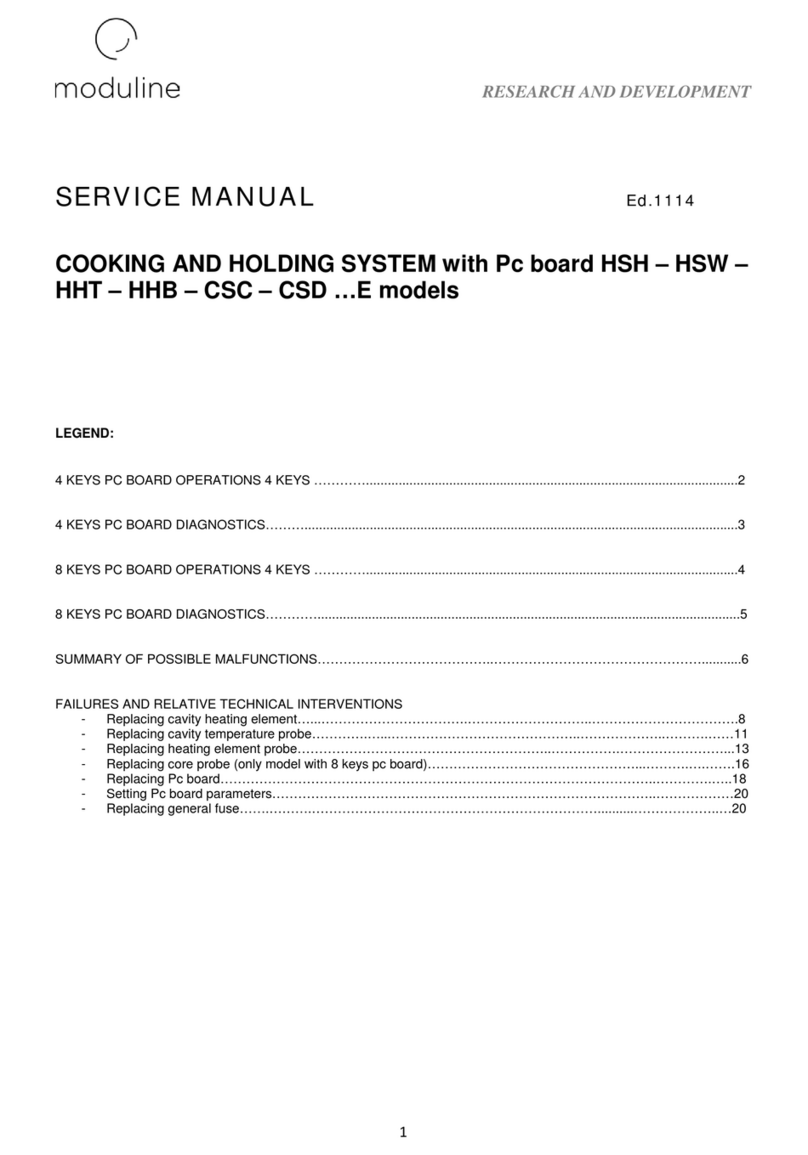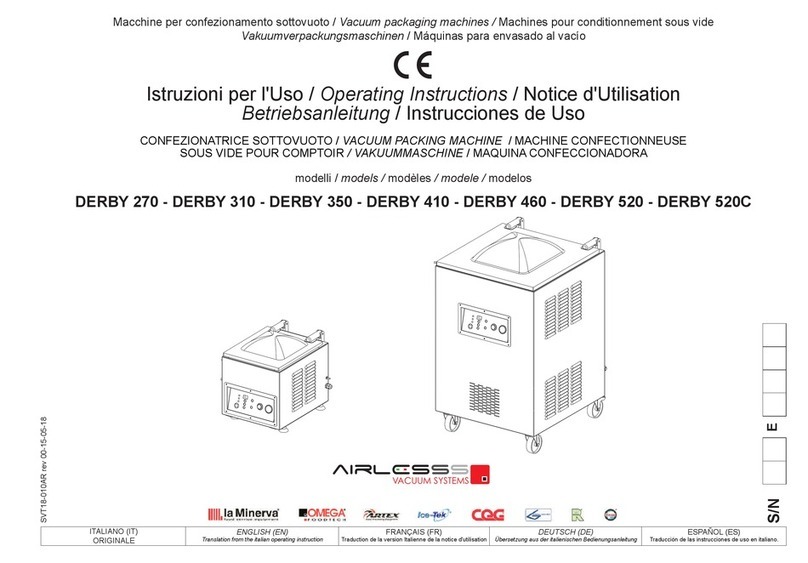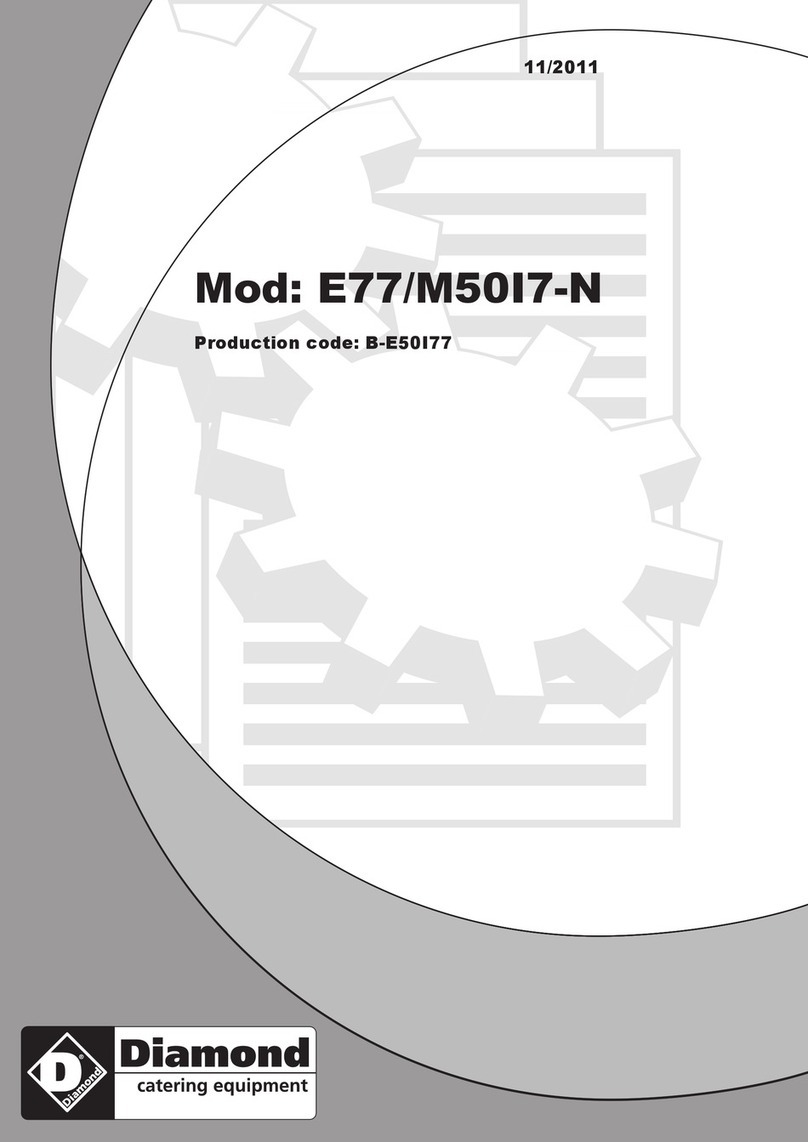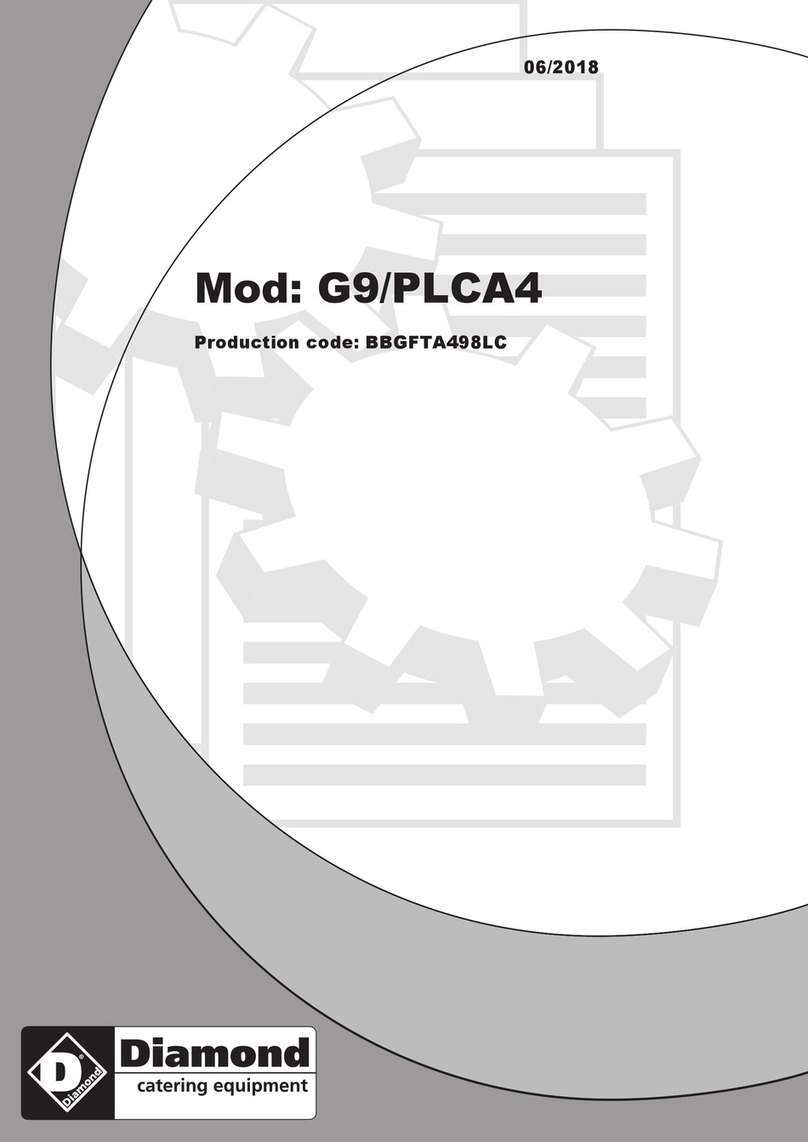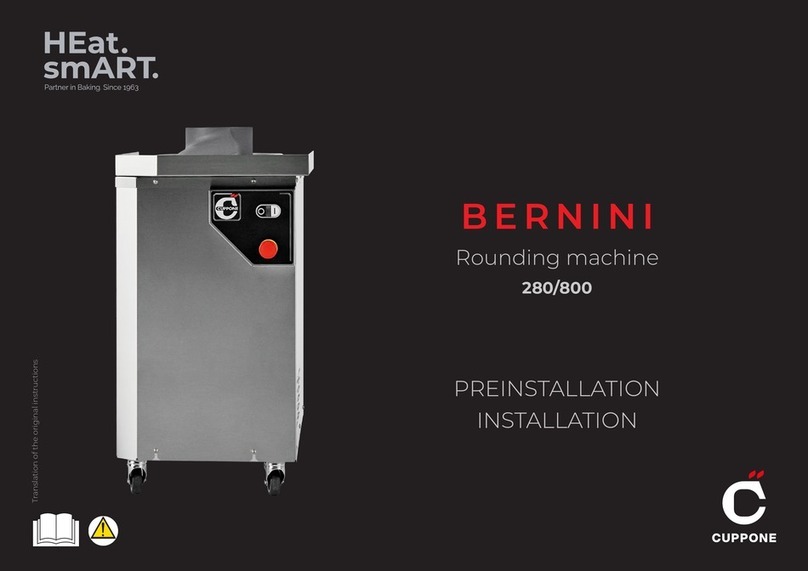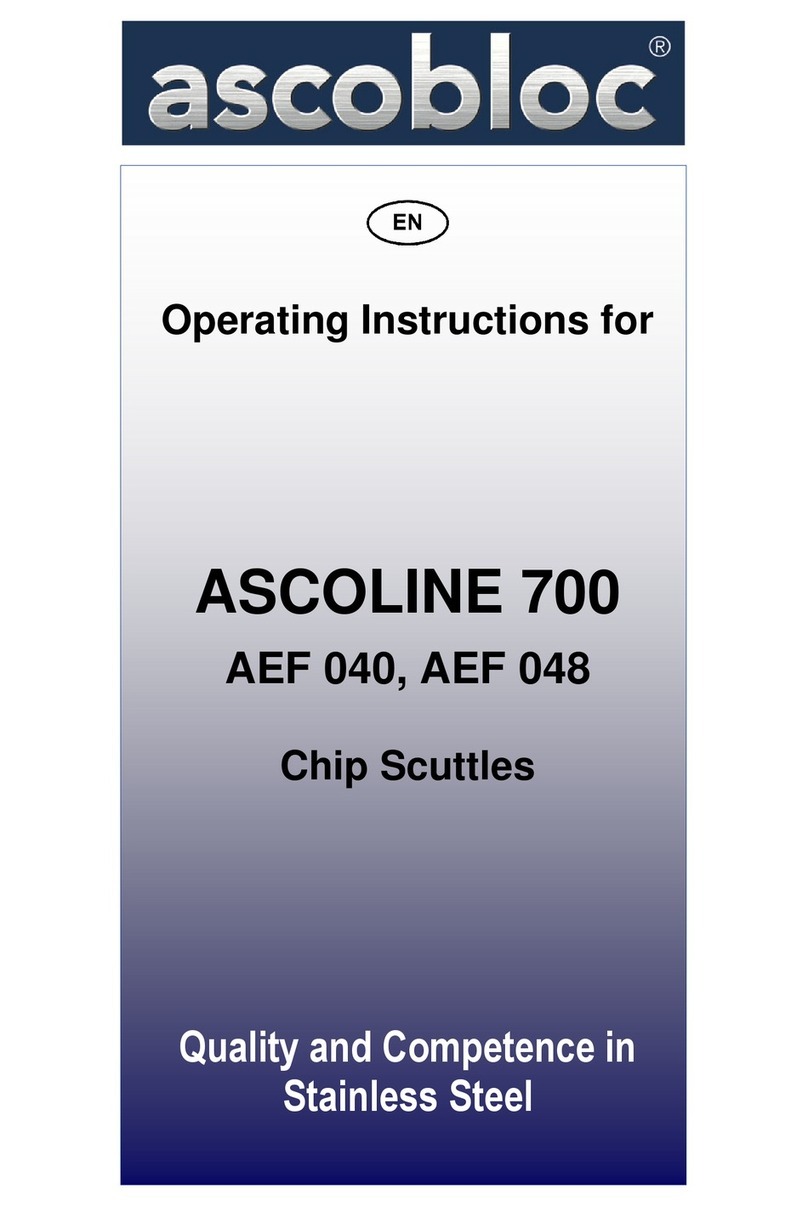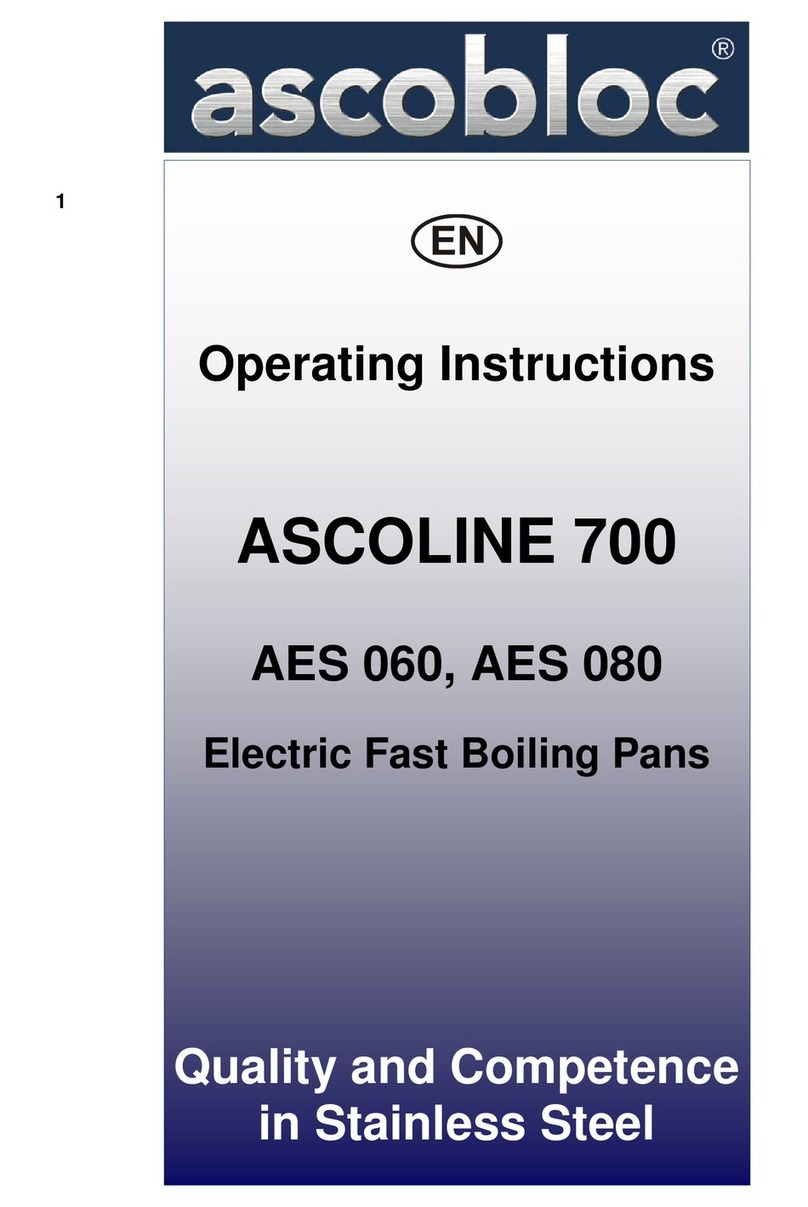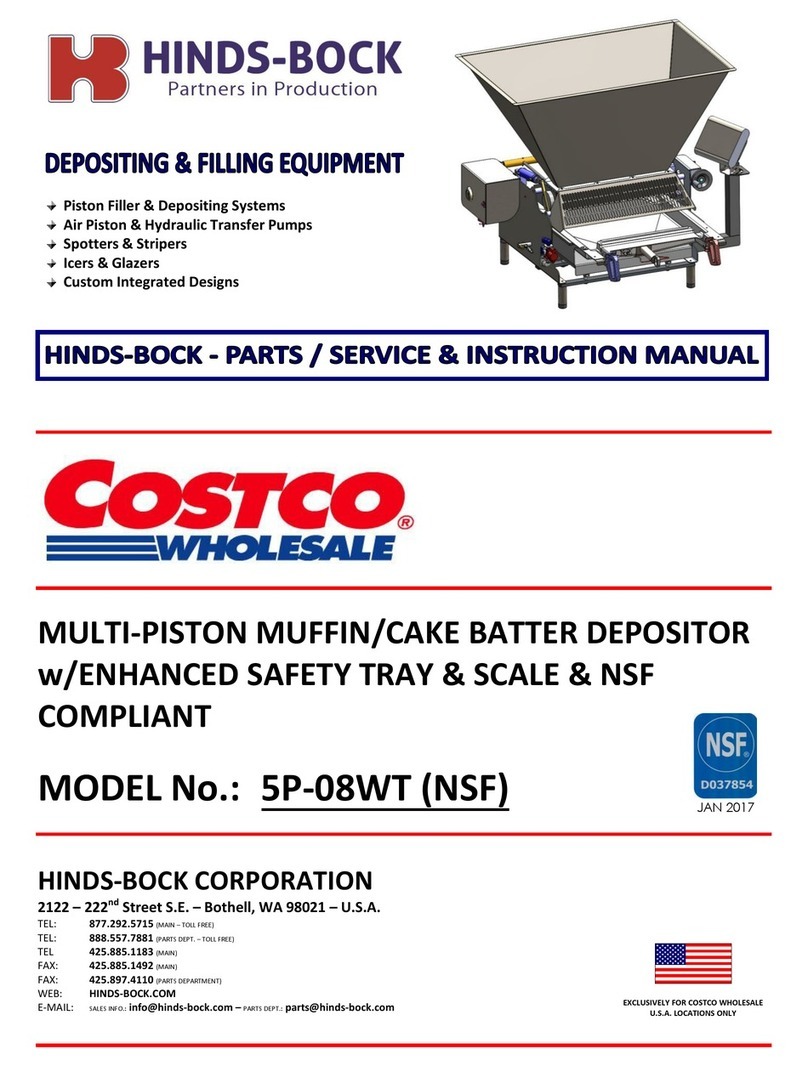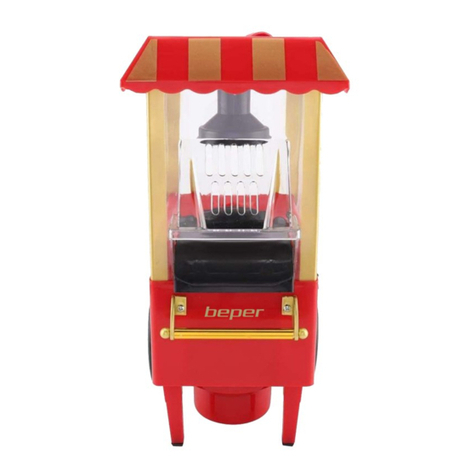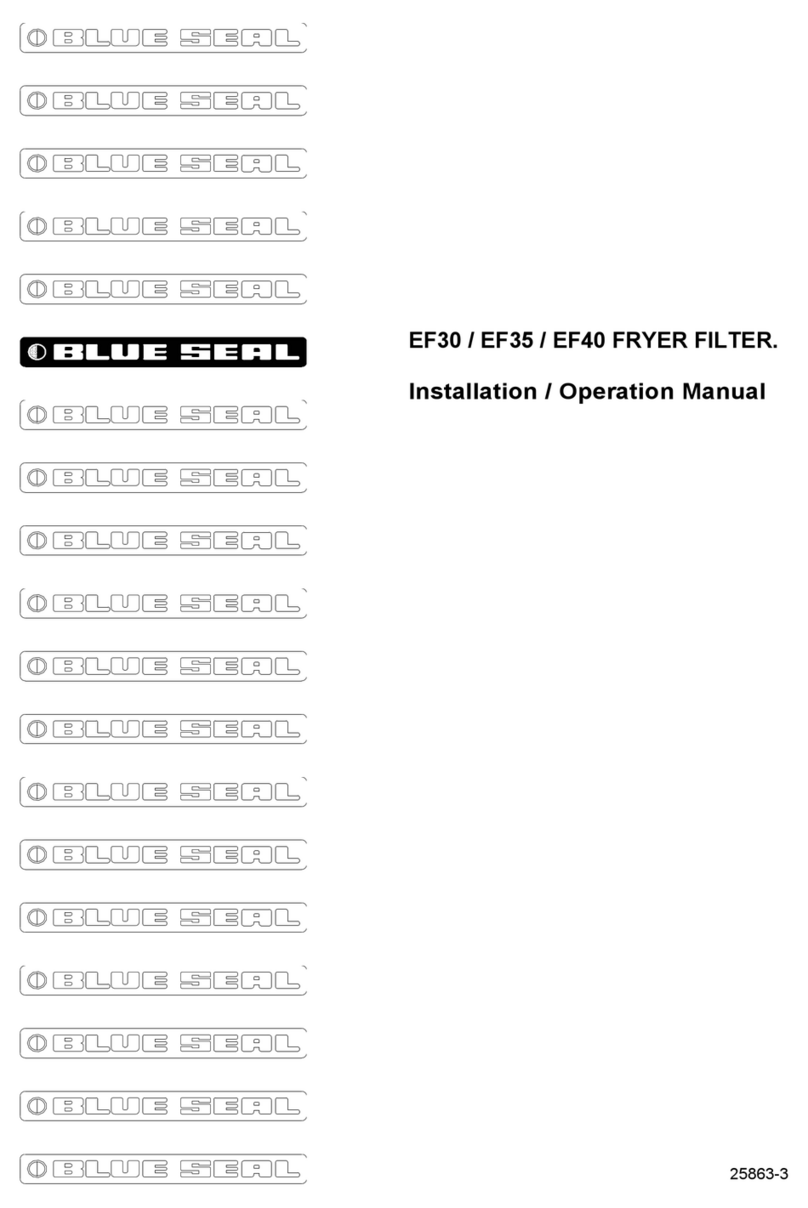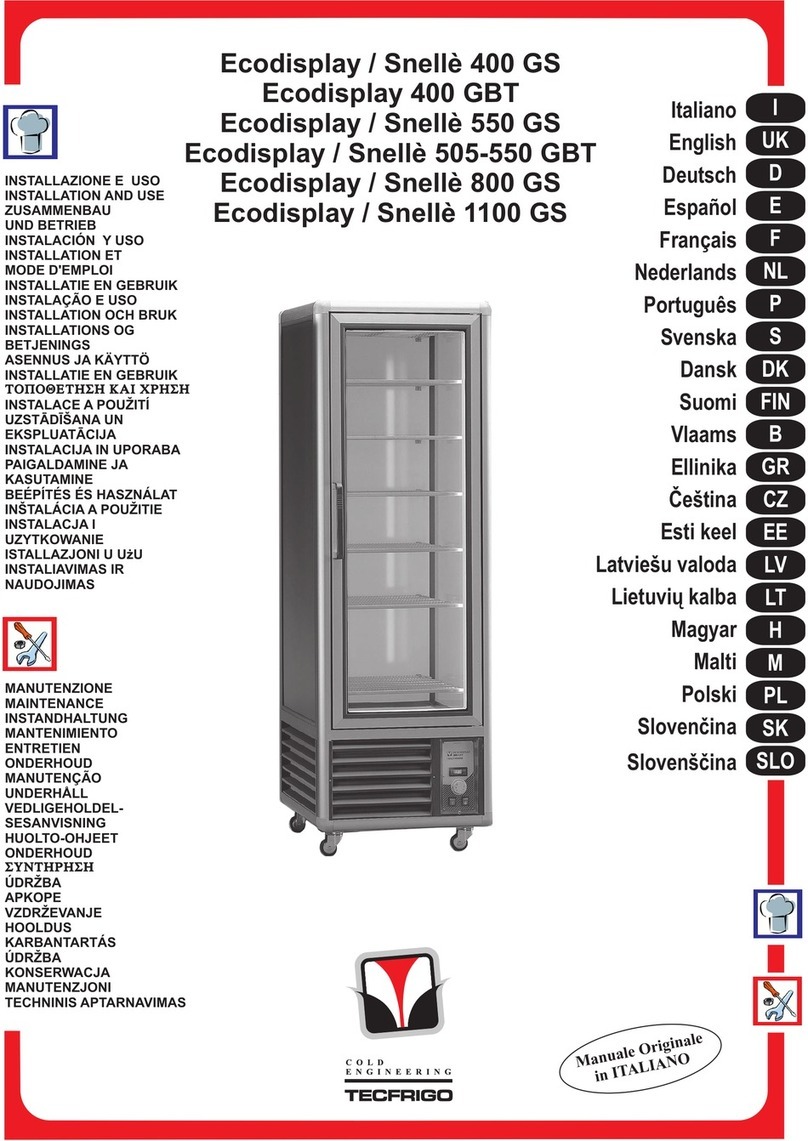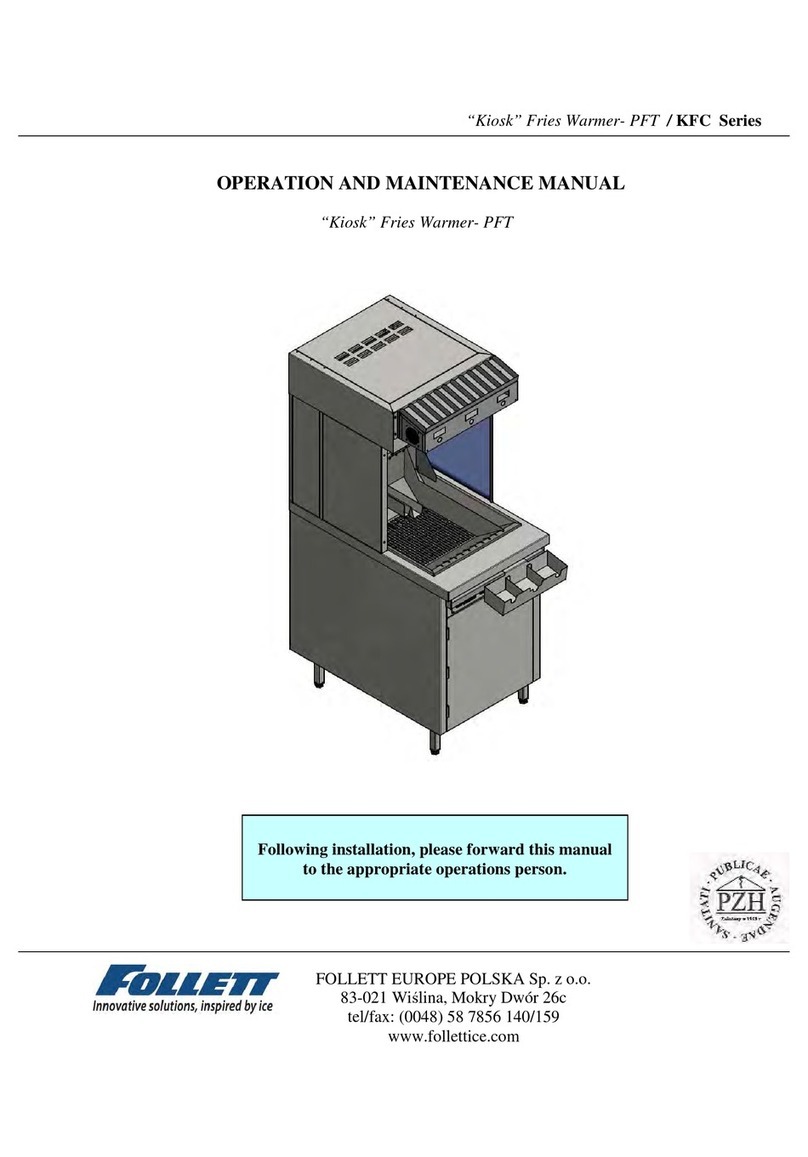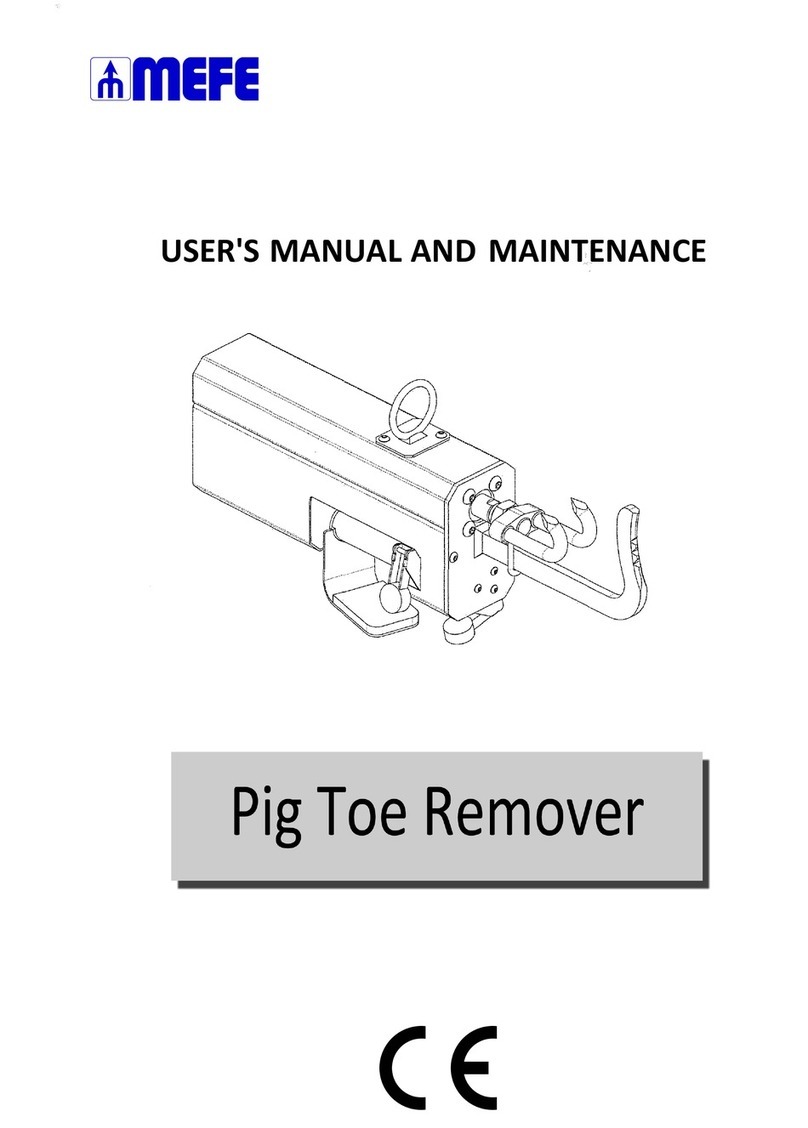
Operating Instructions for Ascoline 700, AGB 23x, AGB 43x
Gastro-Gerätebau GmbH 01156 Dresden, Grüner Weg 29 Germany
Tel.:
+49
351
4533-0
Fax:
+49
351
4537-339
E-mail:
[email protected], AEBx30ff.doc Version: 21/02/2011 Subject to change without notice!
5
Bring all burners into operation. There is air in the lines prior to the first ignition, so it takes somewhat
longer till the pilot burners can be ignited.
Check for ignition from the pilot to the main burner, through-ignition and a regular flame pattern.
5.3 Operation
Open the gas supply valve within the customer's supply before commissioning. Turn the control knob to
"Star" and keep it pressed in. Ignite the pilot flame by pressing the high-voltage igniter several times while
the knob is in the pressed-in position for about 10 seconds. The igniting of the pilot flame can be
observed through the inspection hole in the operating panel.
Preheat for approx. 15 minutes. To do this, set the required surface temperature at the knob for browning
or parboiling on a high flame. Once the preselected surface temperature is reached, the built-in
thermostat automatically regulates the burner to low flame, which corresponds to a surface temperature
of approx. 100°C. As soon as cold food reaches the frying surface, the thermostat reopens the main
nozzle of the burner.
The frying plate can be operated with a liquid fat level or for the preparation of liquid meals by means of
the plug supplied.
Simmering on a low flame can also be set manually by turning the knob to the left end stop. The setting
needed for simmering depends on the condition and the quantity of food to be cooked.
When the knob is at the "Star" position, the frying plate is held in readiness; only the pilot flame is on.
Knob at the "Zero" position extinguishes the burner and the pilot flame.
If the appliance is to be taken out of operation, first set all knobs to "Zero" and then close the gas supply
valve within the customer's supply.
The drain pipe for fried residues leads to a dirt tray lying below it (GN 1/1-65 container). The dirt tray can
be removed and emptied as required. The frying plate cannot be operated without the dirt tray. Please
note that the capacity of every dirt tray is finite!
5.4 Cleaning
Please observe the hygiene regulations in your company! The instructions in this document are not a substitute
for such regulations (observe the tips for handling stainless steel appliances in commercial kitchens!).
Attention! Appliances may not be cleaned using water under pressure (spraying with water hose or
steam jet or pressure washer). The appliance is to be shut off if the surroundings are to be cleaned using
such means!
The appliance must be shut off and adequately cooled down before cleaning. Appliance parts or
accessories that come in contact with foodstuffs must be cleaned thoroughly with cleaning agents and
then rinsed off with tap water. Flammable liquids are not to be used for cleaning.
To avoid interruptions in operation and for hygiene reasons, the appliance should be cleaned daily after
use. The splash guard frame can be completely removed to make it easier to clean the frying plate.
Frying plate
The frying surface has been specially treated at a micro level. Therefore, do not clean the frying plate with steel
wool soap pads (e.g. AKO pads, Abbrazzo) or other abrasive cleaning aids. Do not use any sharp utensils to
remove food residues from the frying plate because this will scratch and deform the frying surface.
In the event of stubborn dirt, spray the special cleaner “Combi-Clean” onto the frying plate and let it take
effect for about 10-20 minutes. Then clean with a coarse sponge and wipe out with clean water.
Do not flood the frying plate, but let the washing water flow through the drain pipe into the dirt tray
underneath. Then clean the drain pipe with a brush and wipe out the frying plate using cloths.
Dirt tray
The dirt tray (GN 1/1-65 container) can be removed and cleaned in the dishwasher.
6 Repair and maintenance
6.1 Repair and maintenance
Please also observe the cleaning and care instructions in the annex!
If there are any signs that functioning is impaired even in the slightest or there are other defects, e.g.
traces of rust, changes in flame pattern, changes in operating behaviour or unusual odours, maintenance
or service is necessary.
6.2 Measures to be taken for longer stoppages
Clean the appliance thoroughly. Close the gas supply valve on the customer side.
